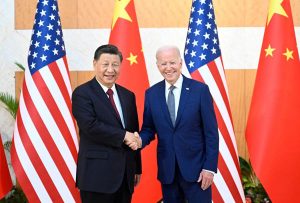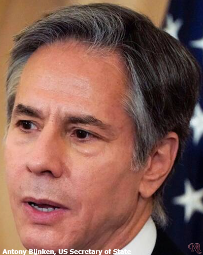N. P. Upadhyaya (Aryal)
Kathmandu: It is said that jealousy is a chronic disease.
Some people and, notably, some countries’ envy the accomplishments of others.
Such complex ridden countries quite often due to their “elephantine size” threaten, bully, intimidate, twist arms and in doing so exhibit their despicable brashness and behaviour as well when they feel that the neighboring nation may slip from its sphere of influence or for that matter go out from their grip.
These mentally sick countries more often than not forget their horrible, terrifying and dejected past that they underwent.
If and when such countries are “blessed” by world power then Almighty is the savior of the neighboring States.
Such countries can be put in the category of those who were suffering from “inferiority complex” syndrome.
It is this inferiority-complex that degrades these envious countries which, as a matter of fact, in order to exhibit their fake preeminence over others tend to act in an erratic and disgusting manner that the civilized world can’t even imagine.
Notably, if the countries with such deleterious attitudes do so only when they too have had the miserable past, for example, being slaves of some powerful countries or may have been subjected to “slavery” for centuries and centuries.
The ordeal of slavery is really traumatic.
Their gloomy past haunts them and they want to forget the previous trauma and tribulations by incurring damage to others.
They take sadistic pleasure from the anguish of others which at an opportune time, sooner than later, or moment boomerangs.
And they bully the people or for that matter the smaller nations in the neighborhood to take unspeakable pleasure from the troubles of the ones who are being subjected by the envious countries’.
Jealousy has no healing. Persons or the nations having this chronic disease fall apart from their own follies time permitting.
Some even split into several pieces. Or await grand disintegration only to give birth to several nations.
Nepal thus awaits several neighboring countries in the immediate neighborhood and three “Pakistan” in this South Asian region. Keep on guessing!
Momentous event of November 14, 2022:
In a rare meet in person, President Joe Biden and President Xi Jinping met at Bali, Indonesia.
The meet of the G20 in Indonesia provided an opportunity to both the political giants-the US and China-to ventilate their points of differences cropped over these years (more so after the Russian military operation in Ukraine or the Russian invasion of Ukraine and Nancy’s visit to Taiwan) and at this venue, both leaders vowed not to flare up conflict and spoke that the two “powers” must work together in ensuring the regional and global peace.
President Biden was candid in his expressions while meeting the newly elected lifetime President, Xi Jinping.
Needless to say, the US president met President Xi immediately after the latter’s winning of the “third” consecutive election which has guaranteed China’s life time Presidency to Jinping a la Chairman Mao.
Both are learnt to have a candid and in-depth interchange of views on issues of strategic importance in China-U.S. relations and on major international and key regional issues.
Thus Biden met with a very powerful Chinese President in Bali.

The two Presidents during their three hours long meet face to face took a small but significant step towards stabilizing their strained relations, opine international relations experts in Nepal.
Writes Emily Feng, John Ruwitch and Franco Ordonez for the npr news portal dated November 14, 2022, that the two world leaders “were blunt with one another” on a range of topics where they do not see eye to eye”.
What has come to our notice from our own high placed political source in Washington D. C. that the US Secretary of State Antony Blinken is likely to make a short trip to Beijing early next year or so?
Dialogues and dialogues only defuse tensions so the best way to calm down the stressed relations is sitting for dialogues, say Nepali observers.
The conversations that the two leaders have had in Bali could have “long lasting” significance for not only the parties in the meeting but also to the entire peace loving people of the world.

Needless to say, the issue of Taiwan occupied the two leaders for most of the time and the rest they both exchanged their views on how to normalize hereafter their tensed bilateral ties.
Apart from their differing opinions on some key international issues, what was more than ear pleasing was the two agreeing to keep open the line of communication in between then come what may.
This was perhaps the primary gain not for the two only but for the entire world.
The US president Biden pointedly said to Xi Jinping that, “As the leaders of our two nations, we share a responsibility, in my view, to show that China and the United States can manage our differences, prevent competition from becoming anything ever near conflict, and to find ways to work together on urgent global issues that require our mutual cooperation”.
Biden’s main focus was Taiwan and he said, “On Taiwan, our one China policy has not changed, the United States opposes any unilateral changes to the status quo by either side, and the world has an interest in the maintenance of peace and stability in the Taiwan Strait”.
Mr. Biden specifically raised concerns about human rights abuses, including China’s practices in Xinjiang, Tibet and Hong Kong, and recapped that U.S. policy toward Taiwan, as stated earlier, remains unchanged.
The bottom line of the US was to send signals to China, as could be understood, that the “status quo” should be allowed to continue which was in the interest of both.
In response to Biden’s reiterations, President Xi reciprocated saying that, “the two countries needed to better meet the world’s expectations.
Biden finally stated that “We’re going to compete vigorously, but I’m not looking for conflict” and that “I’m looking to manage this competition responsibly” was the most impressive of it all.
All put together, the Bali meet of the two, the US and China has given the impression that both prefer competition over confrontation.
But is that what appeared in the statements made in Bali? Or the US is having a “great game” against China in collaboration with India-the South Asian goon? Will any such game impact Nepal?
We shall ponder over these complexities in brief in the following paragraphs.
The US-India joint drill:

A day after the US-China meet in Bali had concluded, contrary to the Chinese expectations, India and the US initiated the 18th edition joint training exercise, “Yudh Abhyas 22,” beginning November 15, 2022, almost close to the Chinese border in Uttarakhand.
The Indian idea is to poke China with US assistance at regular intervals.
The location of the joint drill was Auli, at 9, 500 feet and at a distance of 62 miles from the Line of Actual Control, taken as a disputed border that separates India and China.
A December 4, 2022, article in The Global Times has this to say, “Washington wants to strengthen military cooperation with India to embolden India to provoke China in a more aggressive manner, which can be said to have a strong implication of instigation”.
Who knows India better than China?
Needless to say, just a day ahead of this joint drill in India, the US and China had vowed not to confront but reconcile with each other in Bali, Indonesia.
This drill tentatively gives the impression that the US will not abandon poking or provoking China come what may.
The Chinese media sources say that the joint US-India drill amounts to an interference in the bilateral boundary issue and a violation of agreements between New Delhi and Beijing that no military drill will be held near the Line of Actual Control (LAC), the de facto border between the two countries”.
India reacted to Chinese comments saying that “India exercises with whomsoever it chooses to, and it does not give a veto to third countries on this issue.”
This means that the US and India are on the same wavelength in provoking China dismissing the Bali meet in between Presidents Joe Biden and Xi Jinping.
The Indian nervousness:
On a different plane, hardly had the news of Bali Biden-Xi talks subsided, back in South Asia India’s nervousness took a new height which prompted the South Block mandarins to dictate some “planted” threat loaded statements to be aired through some media men or for that matter scholars who instantly followed the instructions.
The threatening account was meant to signal the US that South Asia be left to the mercy of the former slave country-the republic of India.
South Asia is taken by India as an area that falls under “Indian influence” and so India sounded to the US that its penetration or for that matter “interests” should in no way collide with India’s political benefits.
India will not tolerate even the US if it hurts Indian influence/interests in Nepal.
In other words, Indian hegemony will be accepted by the global powers in the entire South Asian region with special reference to Nepal.
Undoubtedly, the rapprochement or say the détente perceived in US-China talks in Bali stunned India’s born rival ( close to an enemy of sorts) China and the latter may have felt that the US in patching up its strained ties with China in all likelihood strengthens China in the world politics more so in and around South Asia. But is it so?
Reemergence of Nehruvian doctrine:
It is this doctrine enunciated by Pandit Nehru, the cunning Prime Minister of Republic of India, to enunciate an undeclared doctrine that envisaged entire smaller South Asian nations in India’s immediate neighborhood to have been under the “sphere of Indian influence”.
To tame countries like Nepal, Sikkim and Bhutan whose northern borders were in close proximity with arch rival China, India prevailed over these nations with some unequal treaties and announced its supremacy which to a greater extent distances these countries from China.
Nepal with the highest concentration of the “paid and posted Indian agents” is likely to voluntarily yield to the Indian designs. And some additions have been observed from the fresh election results.
Rumors say that the Indo-US lobby has prevailed or shall prevail finally which will further needle China under “instructions” from concerned quarters.
Concluding that the Bali meet, November 14, of the two powers, the US has allowed China in an oblique manner to increase its influence in South Asia, India has expressed its serious concerns wherein the presumably South Block indoctrinated scholars have published an article that in clear terms speaks of India’s ulterior motives as regards this South Asian region.
Look what these South Block close (?) scholars write in “The National Interest” dated November 16, 2002.
They write, “India welcomes the USs engagement with Nepal, as long as such dialogue between Kathmandu and Washington either promotes New Delhi’s interests or promotes the interest of either party without causing harm to Delhi’s interests in the region”.
This clearly means that the US engagements in Nepal is welcome if it doesn’t harm Indian prime interests.
Having said that, India fails to understand that the US is already in Nepal to get its prime interests served.
The US too has a sizable “reenergized lobby” in Nepal that for several reasons will prefer the US over India as against some lucrative benefits. The US penetration in Nepal has substantially increased in the recent months more so after the approval of the Millennium Project-the MCC.
A few US tilted men have just got elected and they are also said to be associated with the Indian lobby in Nepali politics.
So it would be this lobby that shall play double but at the end shall vote in favor of the US causing India to invest more.
This should not mean that the Indian paid agents will cheat India. The Indian lobby too has some “planted” additions this election who will in all likelihood wish the merger of some portion of Nepal into the Indian Union as per the Indian desires.
New Lendhup Dorje of the Sikkimi infamy have emerged, as stated above, in the political scene thus Nepal is just on the verge of annexation or a venue of three country “big” scrimmage” India, the US and obviously China.
The extra activities of the Indian King in Nepal-the Indian envoy, has doubled in these days hinting that the US shall not be allowed to function without the Indian approval.
With so many differences between the US and India in Nepal, however, both converge on how to provoke China from the Nepali soil.
If India has the Dalai Lama Card then the US has too has the freshly enacted Tibetan Policy and Support Act which makes it an official United States policy that the succession of Tibetan Buddhist leaders, including the succession of the Dalai Lama, be left solely to Tibetan Buddhists to decide, without interference from the Chinese government.
Nepal is thus a fertile soil for the US and India to hit China’s underbelly-Tibet that touches the China borders in the North.
Be that as it may, some even suspect in Nepal that India was taken in confidence by the US prior to Biden’s meet with President Xi Jinping.
If so, then China has reasons to suspect the US motive even after the rapprochement in Bali, Indonesia.
The Chinese plans:
The China-Indian Ocean Region Forum on Development Cooperation ((CIDCA) organized an international conference on November 21, 2022, in China that had the attendance of some 19 countries from across the globe sans India.
The Global Times/People’s Review reports that “according to the CIDCA’s official website, the organization’s goals are to develop strategic guidelines, plans, and policies for foreign aid, coordinate and provide advice on important foreign aid issues, advance national reforms with regard to such issues, and identify significant programmes, oversee, and evaluate their implementation.
Just link the event “China-Indian Ocean Region Forum” and the participation of the countries in China with the Bali meet, and the US-India joint drill.
This explains China’s preparedness to the events that have happened in Bali and India well in November this year itself.
Is Nepal the venue for a great game against China? Keep your fingers crossed.
Yes. Kathmandu will be the venue for such a big fight. Fighters to fight with China and later with the US are already in the political arena from Nepal who have just got elected.
Take it for granted that India will not tolerate the USs increased influence in Nepali politics.
That’s all.
#More to follow on the same topic in the next issue as well-Ed. Upadhyaya.
